Discover 35 hidden attractions, cool sights, and unusual things to do in Charleston (United States). Don't miss out on these must-see attractions: Mace Brown Museum of Natural History, Fort Sumter, and St. Matthews Lutheran Church. Also, be sure to include Drayton Hall in your itinerary.
Below, you can find the list of the most amazing places you should visit in Charleston (South Carolina).
Table of Contents
Mace Brown Museum of Natural History

The Mace Brown Museum of Natural History is a public natural history museum located on the campus of The College of Charleston, a public liberal arts college in Charleston, South Carolina. The museum has more than 30,000 vertebrate and invertebrate fossils. The collection's focus is on the paleontology of the South Carolina Lowcountry.
The collection and exhibits showcase extensive fossils of late Cretaceous through Pliocene and Pleistocene marine vertebrates (sharks, rays, chimaeras, fish, marine reptiles, marine mammals) from the southeastern USA, Paleozoic and Mesozoic invertebrates and vertebrates, Mesozoic and Cenozoic fossil plants, Eocene and Oligocene land mammals from the great plains, ice age mammals, and dinosaurs. It is also a world-class collection of Oligocene cetacean fossils. The museum provides insight into the early evolution of whales and dolphins, right at the time that mysticete and odontocete whales split and echolocation evolved. The museum has the holotype specimens of Coronodon, Cotylocara, and Inermorostrum, as well as the reference specimen of Ankylorhiza tiedemani[1]
Address: 202 Calhoun St, 29424-3501 Charleston (The Boroughs)
Fort Sumter
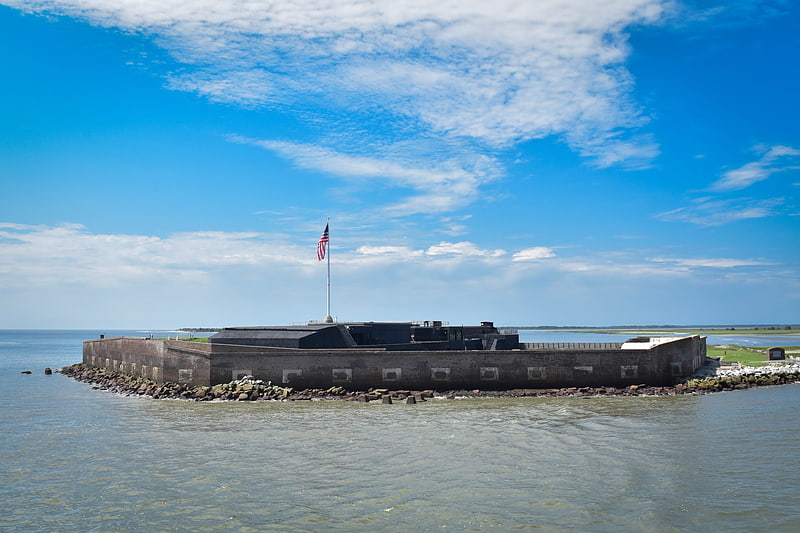
Sea fort with a pivotal Civil War role. Fort Sumter is a sea fort built on an artificial island protecting Charleston, South Carolina from naval invasion. Its origin dates to the War of 1812 when the British invaded Washington by sea. It was still incomplete in 1861 when the Battle of Fort Sumter began the American Civil War. It was severely damaged during the war, left in ruins, and although there was some rebuilding, the fort as conceived was never completed.
Since the middle of the 20th century, Fort Sumter has been open to the public as part of the Fort Sumter and Fort Moultrie National Historical Park, operated by the National Park Service.[2]
Address: 1214 Middle St, 29482 Sullivans Island
St. Matthews Lutheran Church
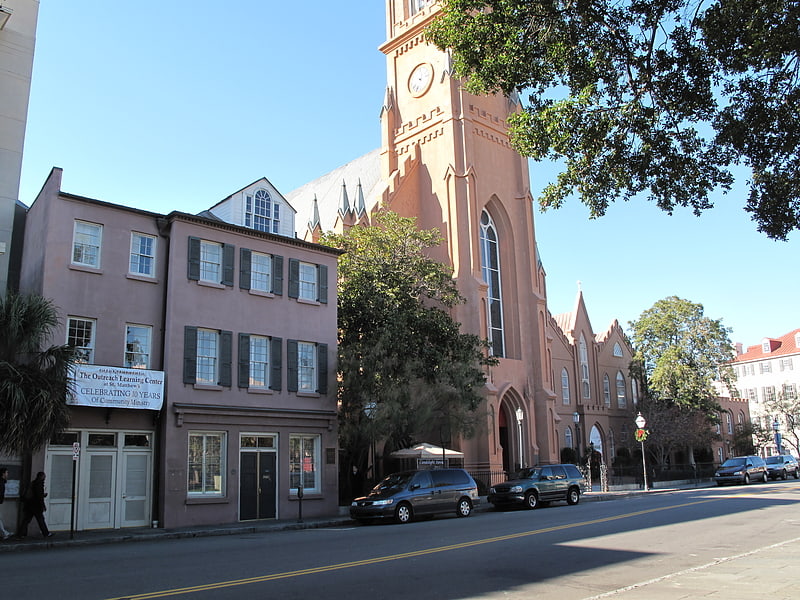
Lutheran church in Charleston, South Carolina. The German Evangelical Lutheran Church of Charleston, South Carolina, was incorporated on December 3, 1840. Through usage and custom the Church is now known as St. Matthew's German Evangelical Lutheran Church or St. Matthew's Lutheran Church and is a member of the South Carolina Synod of the Evangelical Lutheran Church in America.[3]
Address: king st, 29403 Charleston (The Boroughs)
Drayton Hall

Museum in Charleston County, South Carolina. Drayton Hall is an 18th-century plantation located on the Ashley River about 15 miles northwest of Charleston, South Carolina, and directly across the Ashley River from North Charleston, west of the Ashley in the Lowcountry. An outstanding example of Palladian architecture in North America and the only plantation house on the Ashley River to survive intact through both the Revolutionary and Civil wars, it is a National Historic Landmark.[4]
Address: 3380 Ashley River Rd, 29414 Charleston
South Carolina Aquarium
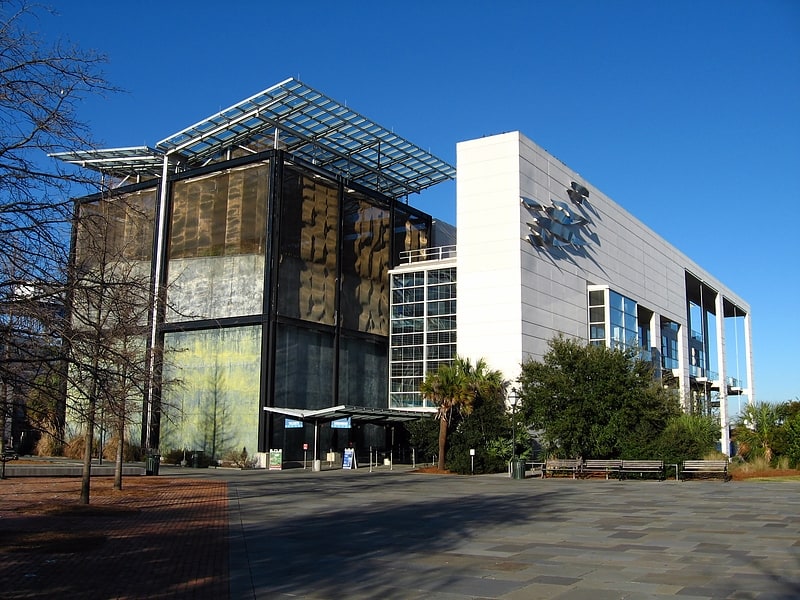
Expansive display of living sea animals. The South Carolina Aquarium, located in Charleston, South Carolina, opened on May 19, 2000 on the historic Charleston Harbor. It is home to more than ten thousand plants and animals including North American river otters, loggerhead sea turtles, alligators, great blue herons, owls, lined seahorses, jellyfish, pufferfish, green moray eels, horseshoe crabs, sea stars, pythons, and sharks. The largest exhibit in the zoo is the Great Ocean Tank, which extends from the first to the third floor of the Aquarium and is the deepest tank in North America; it holds more than 385,000 US gallons of water and contains more than 700 animals. The Aquarium also features a Touch Tank, where patrons may touch horseshoe crabs, Atlantic stingrays, and other marine animals.[5]
Address: 100 Aquarium Wharf, 29401 Charleston
Magnolia Plantation and Gardens
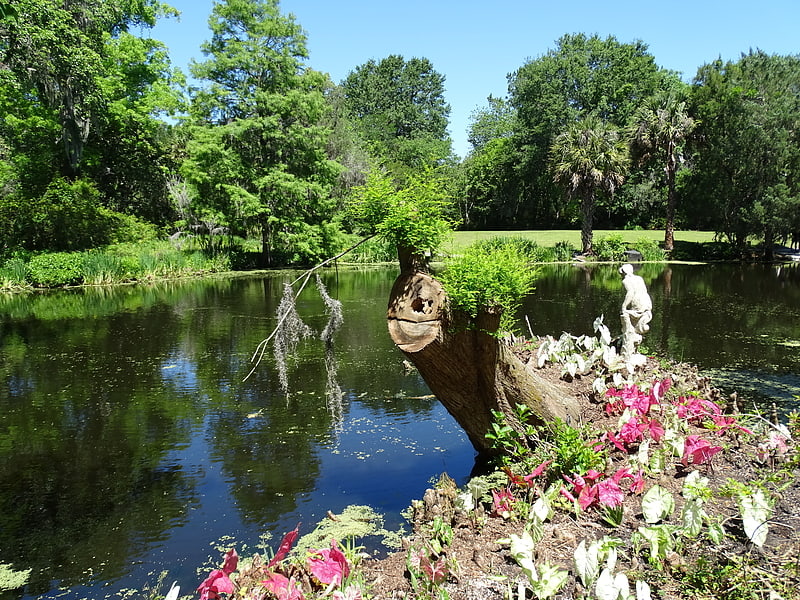
Garden in Charleston County, South Carolina. Magnolia Plantation and Gardens is a historic house with gardens located on the Ashley River at 3550 Ashley River Road west of Ashley, Charleston County, South Carolina. It is one of the oldest plantations in the South, and listed on the National Register of Historic Places. Magnolia Plantation is located near Charleston and directly across the Ashley River from North Charleston. The house and gardens are open daily; an admission fee is charged.
The plantation dates to 1676, when Thomas and Ann Drayton (née Anna Fox) built a house and small formal garden on the site. (The plantation remains under the control of the Drayton family after 15 generations.) Some of the enslaved people who were forced to work at the house were brought by the Draytons from Barbados in the 1670s. The historic Drayton Hall was built in 1738 by enslaved laborers for John Drayton, grandfather of judge John Drayton II, on an adjoining property.
Magnolia was originally a rice plantation, with extensive earthworks of dams and dikes built in fields along the river for irrigating land for rice cultivation. African enslaved people from rice-growing regions created the works. As time went on, these enslaved people developed a creolized Gullah language and vibrant culture, strongly influenced by their West African cultures. They have retained many combined cultural elements from West Africa to this day in what is known as the Gullah Heritage Corridor of the Lowcountry and Sea Islands of the Carolinas and Georgia.[6]
Joseph P. Riley Jr. Park
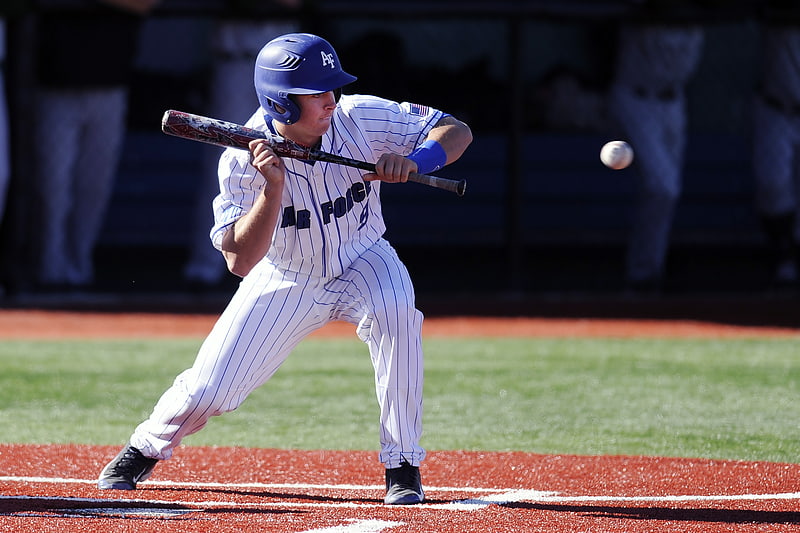
Stadium. Joseph P. Riley Jr. Park is a baseball stadium located in Charleston, South Carolina. The stadium is named after Charleston's longest-serving mayor, Joseph P. Riley Jr. who was instrumental in its construction. The stadium replaced College Park. It was built in 1997 and seats 6,000 people.
Nicknamed "The Joe" by locals, Joseph P. Riley Jr. Park is primarily used for baseball and is the home field of the Charleston RiverDogs baseball team of the Low-A East and The Citadel Bulldogs baseball team, whose campus is located nearby.[7]
Address: 360 Fishburne St, 29403 Charleston
Statue of William Moultrie
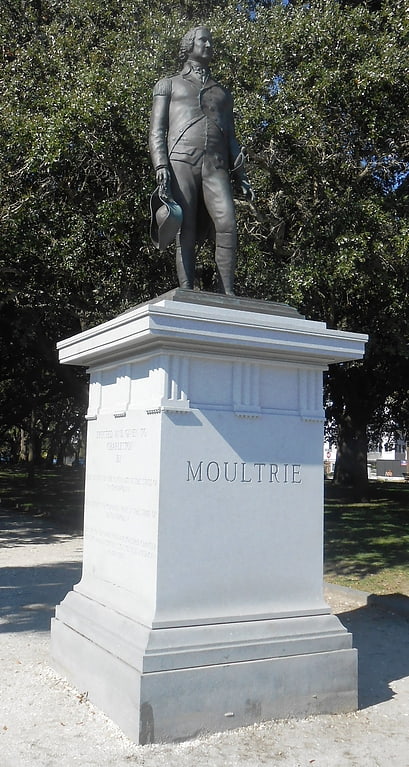
The William Moultrie statue is a monumental statue in Charleston, South Carolina, United States. Located in White Point Garden, the statue was unveiled in 2007 and honors William Moultrie, a general in the American Revolutionary War.[8]
Confederate Defenders of Charleston

Statue by Hermon Atkins MacNeil. Confederate Defenders of Charleston is a monument in Charleston, South Carolina, United States. The monument honors Confederate soldiers from Charleston, most notably those who served at Fort Sumter during the American Civil War. Built with funds provided by a local philanthropist, the monument was designed by Hermon Atkins MacNeil and was dedicated in White Point Garden in 1932. The monument, standing 17 feet tall, features two bronze statues of a sword and shield-bearing defender standing in front of a symbolic representation of the city of Charleston. In recent years, the monument has been the subject of vandalism and calls for removal as part of a larger series of removal of Confederate monuments and memorials in the United States.[9]
Summerall Chapel
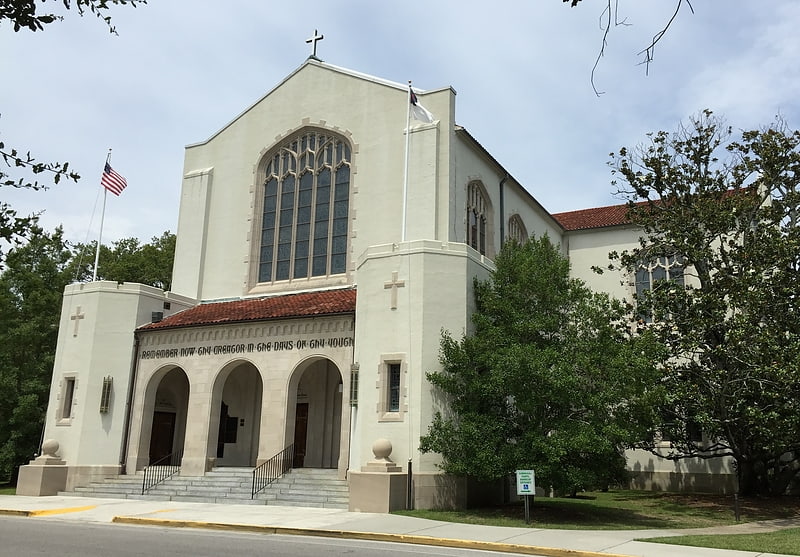
Chapel in Charleston, South Carolina. Summerall Chapel is a cruciform chapel on the campus of The Citadel in Charleston, South Carolina. Constructed from 1936 to 1938, the chapel serves the South Carolina Corps of Cadets and the broader Citadel and Charleston communities. The chapel is non-sectarian, but hosts Catholic, Protestant, and Episcopal worship services weekly during the academic year. Additionally, many special events, such as weddings and the annual Christmas Candlelight Service, are hosted in the chapel.
It is located on the Avenue of Remembrance, directly across Summerall Field from Padgett-Thomas Barracks. It stands between Daniel Library and Mark Clark Hall.[10]
Arthur Ravenel Jr. Bridge
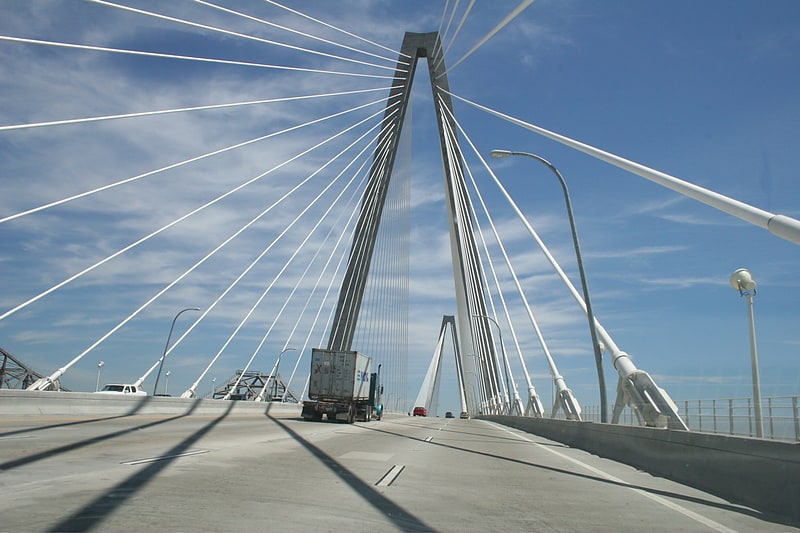
Cable-stayed bridge in Mount Pleasant, South Carolina. The Arthur Ravenel Jr. Bridge is a cable-stayed bridge over the Cooper River in South Carolina, US, connecting downtown Charleston to Mount Pleasant. The bridge has a main span of 1,546 feet, the third longest among cable-stayed bridges in the Western Hemisphere. It was built using the design–build method and was designed by Parsons Brinckerhoff.[11]
White Point Garden

Park in Charleston, South Carolina. White Point Garden is a 5.7 acre public park located in peninsular Charleston, South Carolina, at the tip of the peninsula. It is the southern terminus for the Battery, a defensive seawall and promenade. It is bounded by East Battery, Murray Blvd. King St. and South Battery.[12]
Address: 1 King St, 29401 Charleston
Circular Congregational Church
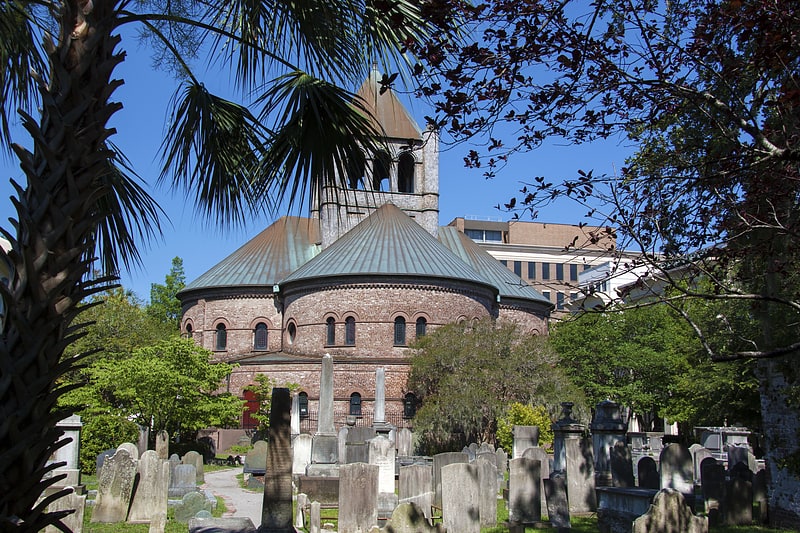
Church in Charleston, South Carolina. The Circular Congregational Church is a historic church building at 150 Meeting Street in Charleston, South Carolina, used by a congregation established in 1681. Its parish house, the Parish House of the Circular Congregational Church, is a highly significant Greek Revival architectural work by Robert Mills and is recognized as a U.S. National Historic Landmark.[13]
Address: 138 Meeting St, 29401 Charleston
Nathaniel Russell House
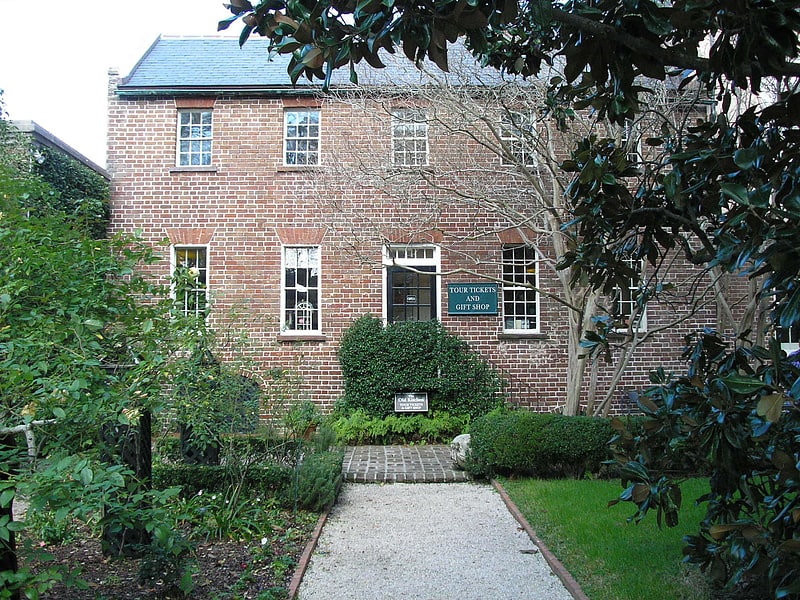
Historical place museum in Charleston, South Carolina. The Nathaniel Russell House is a historic house at 51 Meeting Street in Charleston, South Carolina, United States. Built in 1808 by wealthy merchant and slave trader Nathaniel Russell, it is recognized as one of America's most important neoclassical houses. It was designated a National Historic Landmark in 1973.[14]
Address: 40 E Bay St, 29401 Charleston
Waterfront Park

Park in Charleston, South Carolina. Waterfront Park is an eight-acre park along approximately one-half mile of the Cooper River in Charleston, South Carolina. The park received the 2007 Landmark Award from the American Society of Landscape Architects and the National Trust for Historic Preservation. This award "recognizes a distinguished landscape architecture project completed between 15 and 50 years ago that retains its original design integrity and contributes significantly to the public realm of the community in which it is located."[15]
Address: Concord St, 29401 Charleston
The Battery
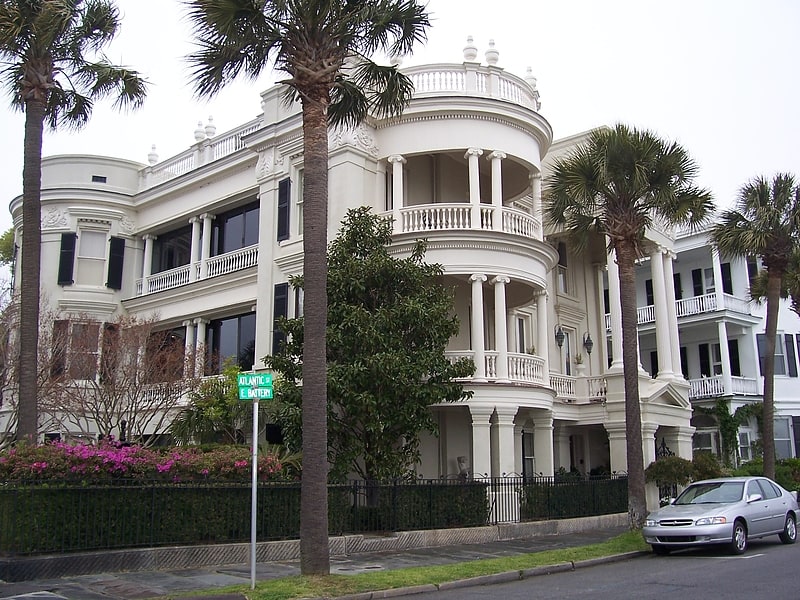
Historical landmark in Charleston, South Carolina. The Battery is a landmark defensive seawall and promenade in Charleston, South Carolina. Named for a civil-war coastal defense artillery battery at the site, it stretches along the lower shores of the Charleston peninsula, bordered by the Ashley and Cooper Rivers, which meet here to form Charleston harbor.[16]
Address: East Battery, 29401 Charleston
Joseph Manigault House
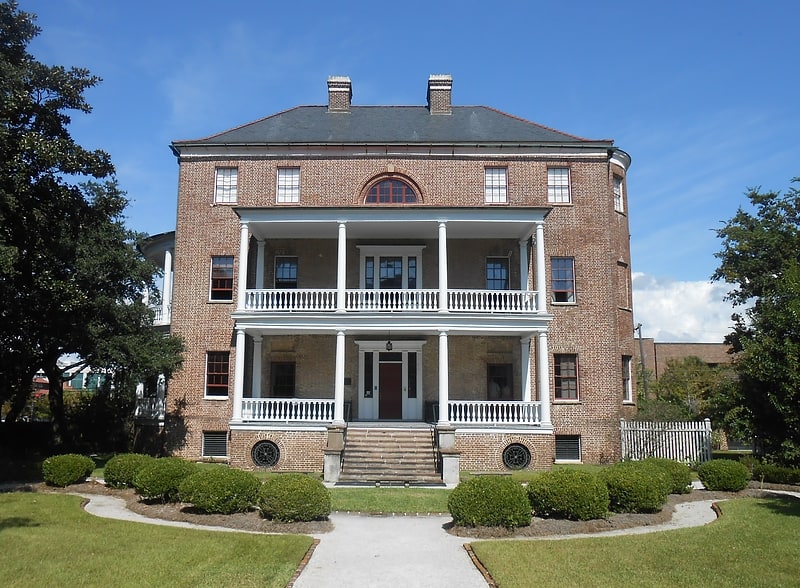
Museum in Charleston, South Carolina. The Joseph Manigault House is a historic house museum in Charleston, South Carolina that is owned and operated by the Charleston Museum. Built in 1803, it was designed by Gabriel Manigault to be the home of his brother, and is nationally significant as a well-executed and preserved example of Adam style architecture. It was declared a National Historic Landmark in 1973.[17]
Address: 350 Meeting Street, 29403 Charleston (The Boroughs)
United States Custom House
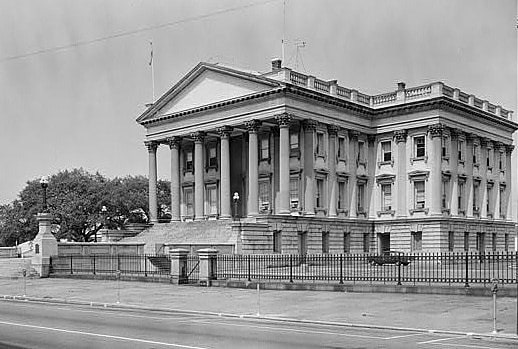
Historical landmark in Charleston, South Carolina. The U.S. Custom House or U.S. Customhouse is the custom house in Charleston, South Carolina. Construction began in 1852, but was interrupted in 1859 due to costs and the possibility of South Carolina's secession from the Union. After the Civil War, construction was restarted in 1870 and completed in 1879. The building was placed on the National Register of Historic Places on October 9, 1974. It is also a contributing property of the Charleston Historic District.[18]
Marion Square
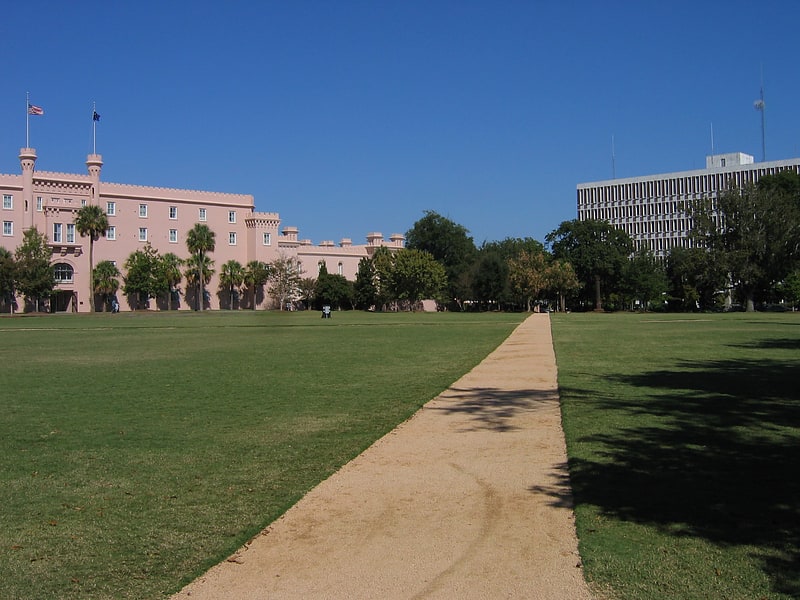
Park in Charleston, South Carolina. Marion Square is greenspace in downtown Charleston, South Carolina, spanning six and one half acres. The square was established as a parade ground for the state arsenal under construction on the north side of the square. It is best known as the former Citadel Green because The Citadel occupied the arsenal from 1843 until 1922, when the Citadel moved to the city's west side. Marion Square was named in honor of Francis Marion.
The square is bounded by Calhoun (south), Meeting (east), Tobacco (a pedestrian only right-of-way that lies between the square and properties to the north) and King (west) Streets. The land is what remains from a 10-acre (40,000 m2) parcel conveyed to the colony of South Carolina in 1758. When Joseph Wragg died, his son, John Wragg, received 79 acres along King Street. In 1758, John Wragg sold 8.75 acres to the provincial government for 1,230 pounds for use in the construction of a defensive wall to keep the city safe from Indians and, later, the British. By 1783, there was no longer a need for the defense works, and the 8.75 acres were transferred to the newly created city government. In 1789, the state reacquired a portion of the land along the northern edge to build a tobacco inspection complex. When John Wragg's estate was being administered, an error was discovered; it seems that when the 8.75 acres was acquired by the city, an extra 1.40 acres was also taken over to compensate for the portion of the 8.75 acres which had become used as roads. A petition was submitted to the South Carolina Senate by John Wragg's heirs, and the matter was taken up by a Senate committee in December 1800. The state opted to pay the heirs for the 1.40 acres that had been mistakenly taken beyond the original 8.75 acres; returning the land was impractical since the tobacco complex had already been built by the time the error was discovered.
The square is jointly owned by the Washington Light Infantry and the Sumter Guards. Their objections prevented city officials from paving the park as a parking lot in the 1940s and in 1956 and also prevented its development as a shopping center. It is operated as a public park under a lease by the city of Charleston. Under the terms of the lease, the center of the square is kept open as a parade ground. Marion Square is situated directly across from the historic Citadel Square Baptist Church and the South Carolina State Arsenal (Old Citadel).
The space is a favorite place for College of Charleston students because of its proximity to campus. In 2003, city council member Wendell Gaillard proposed banning sun-bathing in Marion Square ("This 'Girls-Gone-Wild'-type attitude has caught ahold all across the country. We don't want it to get to that point..." Gaillard said), but his proposal was met with little support; Gaillard claimed that exposing churchgoers and families to sunbathing was wrong and that sun-bathing students might attract stalkers to the area.
The square is the home to many monuments, including a Holocaust memorial, an obelisk dedicated to Wade Hampton, and a statue of John C. Calhoun in cast bronze atop a giant pillar. The Calhoun monument is the second such structure in the square. The first one was not liked by the people of Charleston, and the organizers of the installation had problems with the delivery of the pieces. Eventually, in 1894, a new artist, J. Massey Rhind, was commissioned to create a new figure. A new memorial was raised in 1896, and the old one was sold off for scrap value. Controversy again arose in 2017 over Calhoun's views on slavery. In June 2020, the statue of Calhoun was removed by City Council. In January 2021, a time capsule was found while completing the removal of the base of the statue. The time capsule dated to 1858 and was relocated under the monument during its construction later.
In 1944, a bandstand in the Art Moderne style was built according to plans by Augustus Constantine. The structure had originally been planned to house restroom facilities for white servicemen, but a bandstand component was added to the plans. The bandstand became a spot for political rallies, but the restrooms were a constant problem because of vandals. The bandstand was ultimately razed during a refurbishing of the park that began in August 2000 and concluded in 2001. The bandstand had been in very poor shape since at least 1961 when city council approved its removal.
During the summer the square is also the home to a farmers market on Saturdays and various festivals such as the Food and Wine Festival and the Spoleto Arts Festival. Since 1913 a tree has been placed in Marion Square for the Christmas season.[19]
Address: Calhoun St, 29403 Charleston (The Boroughs)
St. Philip's Church
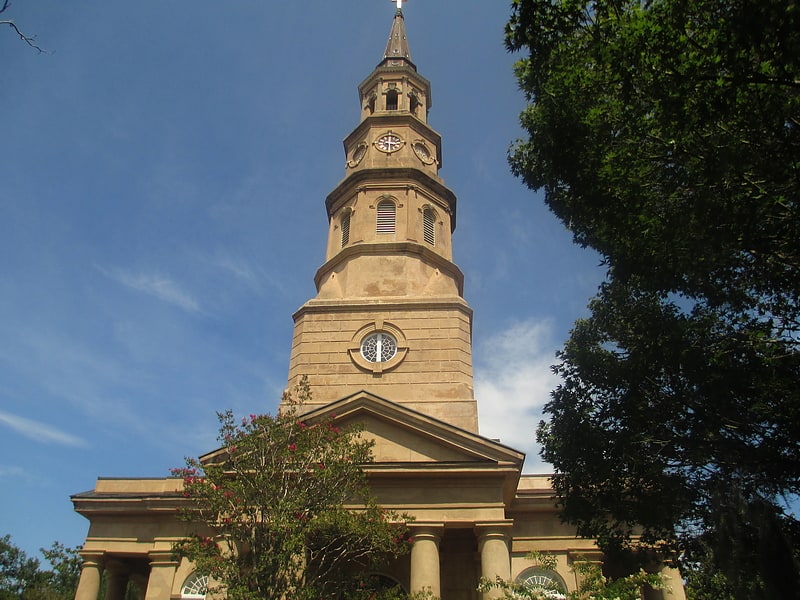
Building in Charleston, South Carolina. St. Philip's Church is an historic church at 142 Church Street in Charleston, South Carolina. Its National Historic Landmark description states: "Built in 1836, this stuccoed brick church features an imposing tower designed in the Wren-Gibbs tradition. Three Tuscan pedimented porticoes contribute to this design to make a building of the highest quality and sophistication." On November 7, 1973, it was added to the National Register of Historic Places and designated a National Historic Landmark.[20]
Address: 142 Church St, 29401 Charleston
City Market
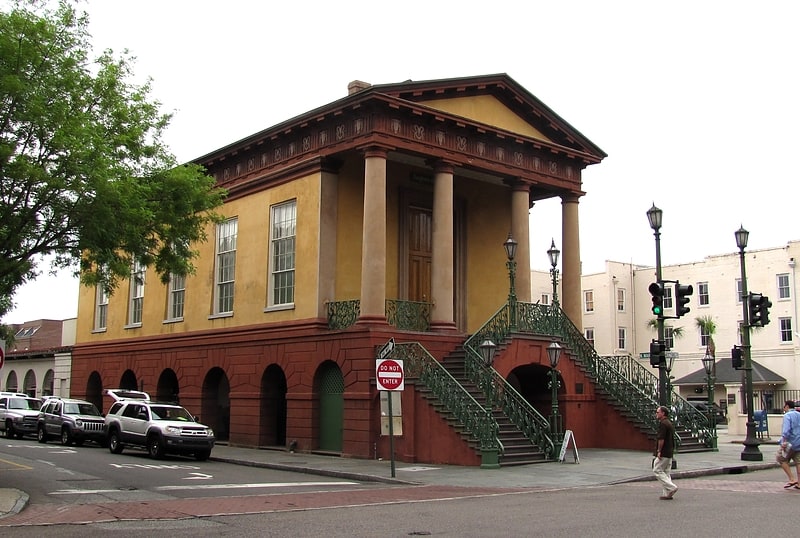
Market in Charleston, South Carolina. The City Market is a historic market complex in downtown Charleston, South Carolina. Established in the 1790s, the market stretches for four city blocks from the architecturally-significant Market Hall, which faces Meeting Street, through a continuous series of one-story market sheds, the last of which terminates at East Bay Street. The market should not be confused with the Old Slave Mart where slaves were sold, as slaves were never sold in the City Market. The City Market Hall has been described as a building of the "highest architectural design quality." The entire complex was listed on the National Register of Historic Places as Market Hall and Sheds and was further designated a National Historic Landmark.
Initially known as the Centre Market, Charleston's City Market was developed as a replacement for the city's Beef Market building (on the site of Charleston's City Hall, 100 Broad Street), which burned in 1796. Market Hall, designed by Charleston architect Edward B. White, was added in the early 1840s. Throughout the 19th century, the market provided a convenient place for area farms and plantations to sell beef and produce, and also acted as a place for locals to gather and socialize. Today, the City Market's vendors sell souvenirs and other items ranging from jewelry to Gullah sweetgrass baskets. Since 1899, the City Market has housed Charleston's Confederate Museum.[21]
Address: 188 Meeting St, 29401-3155 Charleston
Morris Island Lighthouse
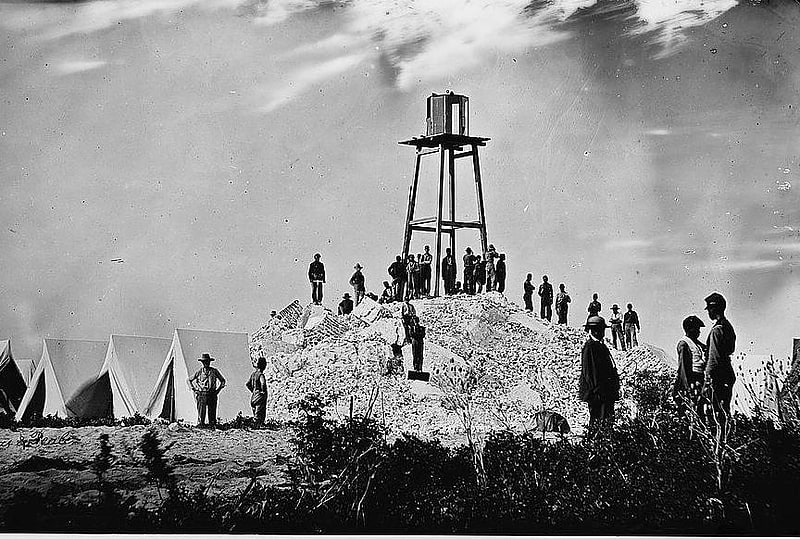
Lighthouse in Charleston County, South Carolina. Morris Island Light is a lighthouse on Morris Island in South Carolina. The light stands on the southern side of the entrance to Charleston Harbor, north of the City of Folly Beach. At 161 ft, it is the tallest lighthouse in South Carolina. The lighthouse was named to the National Register of Historic Places in 1982.
Although the lighthouse now stands several hundred feet offshore, it was originally inside a much larger island. When constructed in 1876, the light was approximately 1,200 feet (370 m) from the water's edge. However, the construction in 1889 of the jetties which protect the shipping lanes leading to Charleston Harbor altered ocean currents, resulting in the rapid erosion of Morris Island and the destruction of many structures and historical sites (such as Fort Wagner). By 1938 the shoreline had reached the lighthouse, forcing its automation as it was no longer safe or practical to keep it staffed. In 1962 the Morris Island Light was decommissioned and replaced by the new Charleston Light, located on Sullivan's Island at the north end of the harbor.[22]
Address: At the east end of Folly Island, Charleston
USS Clamagore
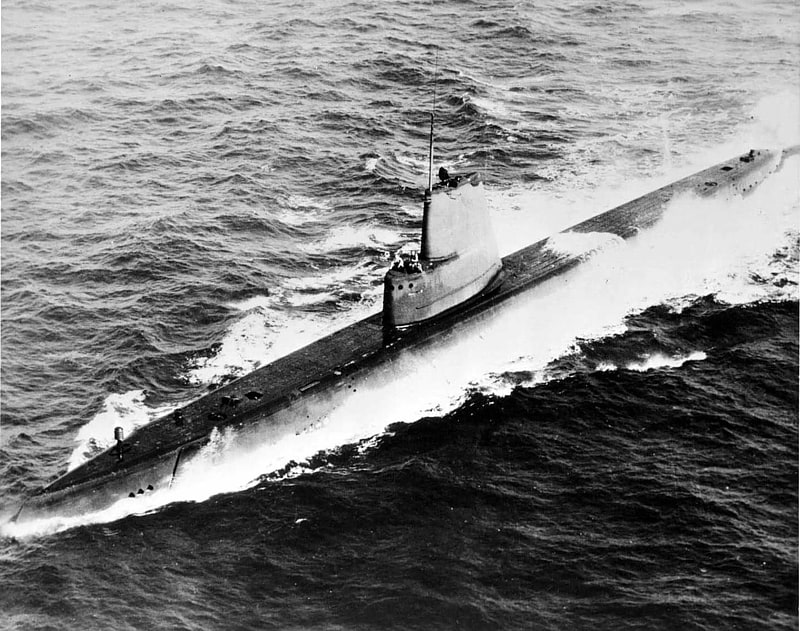
Museum in a Cold War–era submarine. USS Clamagore is a Balao-class submarine, presently a museum ship at the Patriot's Point Naval & Maritime Museum outside Charleston, South Carolina. Built in 1945 for the United States Navy, she was still in training when World War II ended. She was named for the clamagore. A National Historic Landmark, she is the only known surviving example of a GUPPY III type submarine.[23]
Charleston Museum
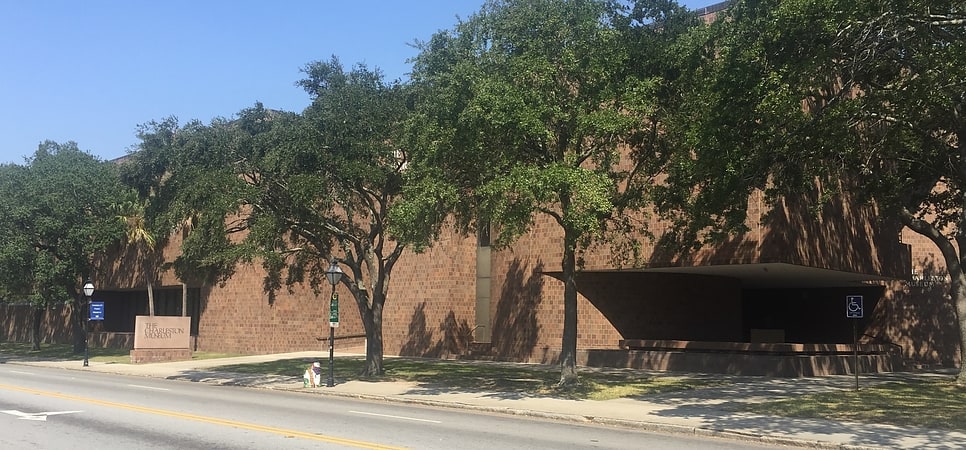
Museum in Charleston, South Carolina. The Charleston Museum is a museum located in the Wraggborough neighborhood in Charleston, South Carolina. It is one of the oldest museums in the United States. Its highly regarded collection includes historic artifacts, natural history, decorative arts and two historic Charleston houses.[24]
Address: 360 Meeting St, 29403 Charleston (The Boroughs)
Huguenot Church
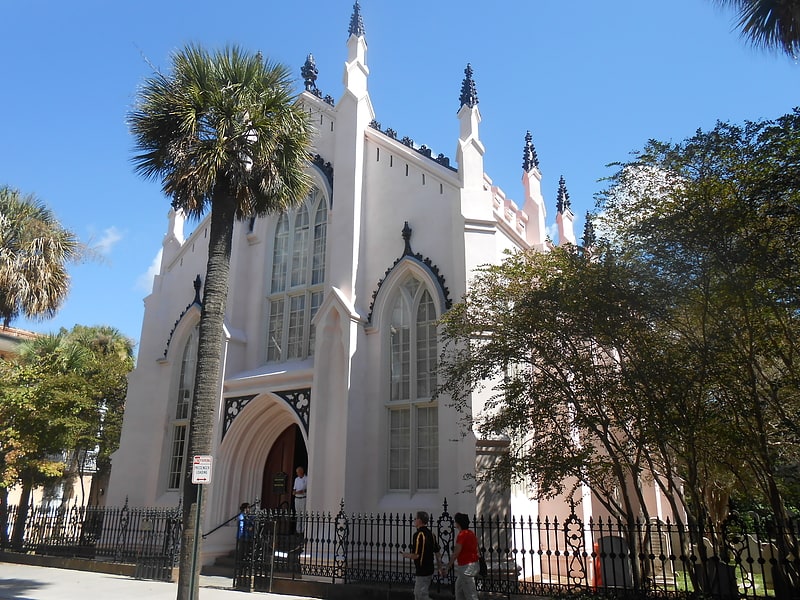
Protestant church in Charleston, South Carolina. The Huguenot Church, also called the French Huguenot Church or the French Protestant Church, is a Gothic Revival church located at 136 Church Street in Charleston, South Carolina. Built in 1844 and designed by architect Edward Brickell White, it is the oldest Gothic Revival church in South Carolina, and has been designated a National Historic Landmark and listed on the National Register of Historic Places. The congregation it serves traces its origins to the 1680s, and is the only independent Huguenot church in the United States.
As Protestants in predominantly-Catholic France, Huguenots faced persecution throughout the 16th and 17th centuries. Following the Revocation of the Edict of Nantes in 1685, many Huguenots fled France for various parts of the world, including Charleston. The early congregation of Charleston's Huguenot Church included many of these refugees, and their descendants continued to play a role in the church's affairs for many decades. The church was originally affiliated with the Calvinist Reformed Church of France, and its doctrine still retains elements of Calvinist doctrine. The church's services still follow 18th century French liturgy, but are conducted in English.
The church is located in the area of Charleston known as the French Quarter, which was given this name in 1973 as part of preservation efforts. It recognizes that the area had a historically high concentration of French merchants. Peter Manigault, once the wealthiest man in the British North American colonies, is buried in the church cemetery.[25]
Address: 136 Church St, 29401-2802 Charleston
Cathedral of Saint John the Baptist
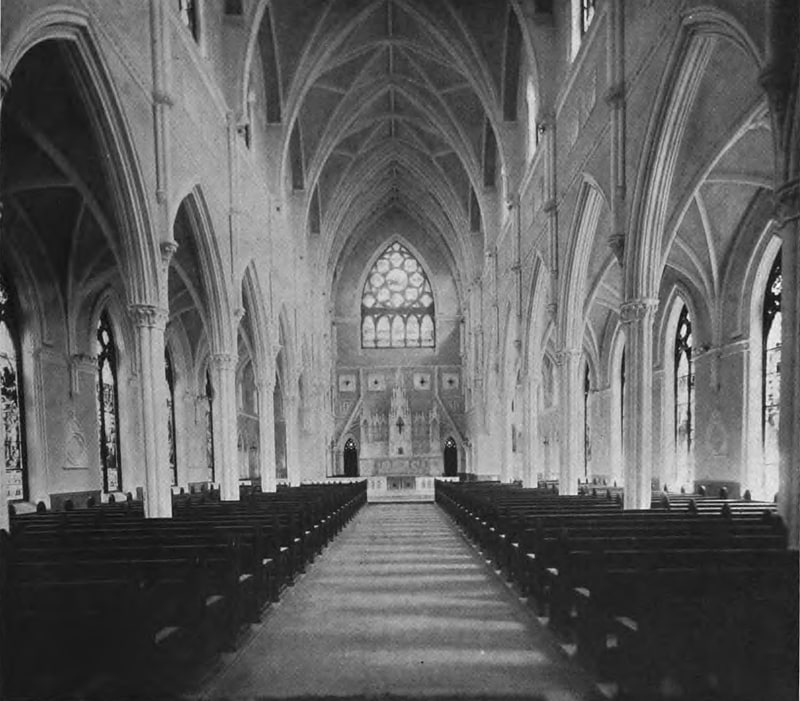
Catholic cathedral in Charleston, South Carolina. The Cathedral of St. John the Baptist is the mother church of the Roman Catholic Diocese of Charleston, located in Charleston, South Carolina. Designed by Brooklyn architect Patrick Keely in the Gothic Revival style, it opened in 1907. The Most Reverend Robert E. Guglielmone, D.D. the thirteenth Bishop of Charleston, was ordained and installed on March 25, 2009.[26]
Address: 120 Broad St, 29401 Charleston
Williams Mansion

Historical place museum in Charleston, South Carolina. The Williams Mansion is a Victorian house at 16 Meeting St. Charleston, South Carolina. The mansion is open for public tours.[27]
Address: 16 Meeting St, 29401 Charleston
Dock Street Theatre
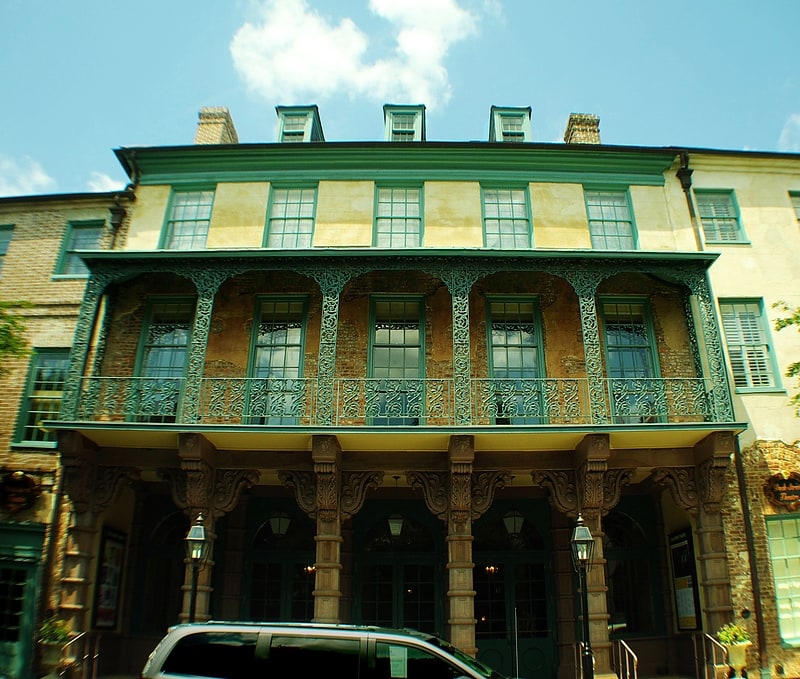
Theater in Charleston, South Carolina. The Dock Street Theatre is a theater in the historic French Quarter neighborhood of downtown Charleston, South Carolina.[28]
Address: 135 Church St, 29401 Charleston
Wappoo Creek Bridge
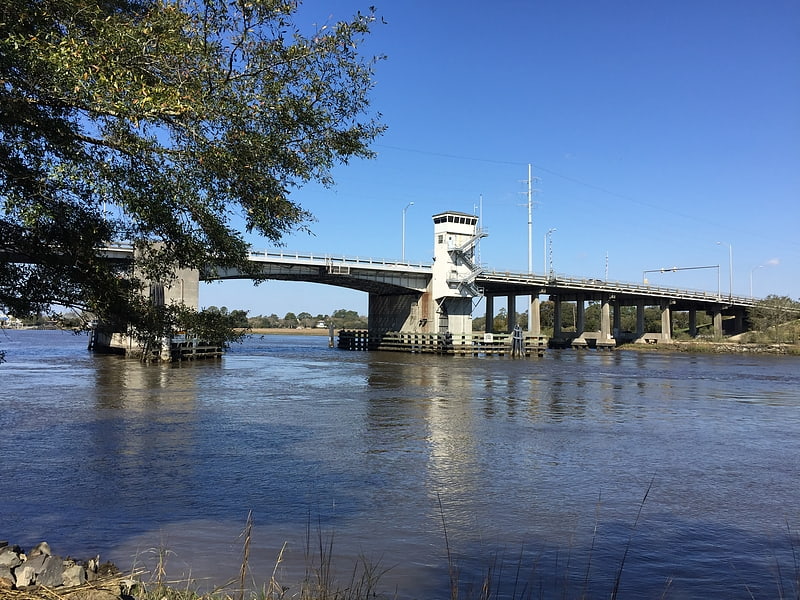
The Wappoo Creek Bridge is a bridge that connects the cities of Charleston and James Island in South Carolina.
No bridge crossed the Wappoo Cut at the present location historically. A private company was chartered in 1896 and began raising funds. In 1898, when the idea of building a bridge was raised, phosphate companies, lumber companies, and towboat companies were aligned against the proposal for fear of its impact on their shipping businesses.
A wooden bridge was added over the Wappoo Creek. That first bridge operated as a toll bridge until the privately-owned span was bought by the county in 1918. The county negotiated the price down to $8500 from $12,500, explaining that about $3500 of repairs were needed.
The second bridge, opened in 1926, was a 434 foot span of concrete and metal. The earlier bridge had been rendered inadequate by the new developments on James Island including the Charleston County Club. When opened, the bridge was a swing bridge with a roadway 20 feet wide. The 1926 bridge was designed by James L. Parker and was built by the Sanitary and Drainage Commission of Charleston County with the Salmons-Clement Co. as the concrete contractor at a cost of $140,000.
The 1926 swing bridge was, like the first bridge, inadequate for the increases in traffic. In 1949, funding (about $400,000) was secured for a larger bridge that would not have to been opened as frequently to permit small boats to pass. The replacement span was expected to be about 20 higher (30 feet versus 10.5 feet) than the swing span and was to be built 500 feet westward of the swing bridge to alleviate sharp turns on the approach. Surveying work for the draw bridge began in 1954.
The current bridge was named to honor Burnet R. Maybank. The $900,000 bridge opened to traffic on June 12, 1956.[29]
Rainbow Row

Tourist attraction in Charleston, South Carolina. Rainbow Row is the name for a series of thirteen colorful historic houses in Charleston, South Carolina. The houses are located north of Tradd St. and south of Elliott St. on East Bay Street, that is, 79 to 107 East Bay Street. The name Rainbow Row was coined after the pastel colors they were painted as they were restored in the 1930s and 1940s. It is a popular tourist attraction and is one of the most photographed parts of Charleston.[30]
Address: 83 - 107 East Bay Street, 29415 Charleston
Emanuel African Methodist Episcopal Church
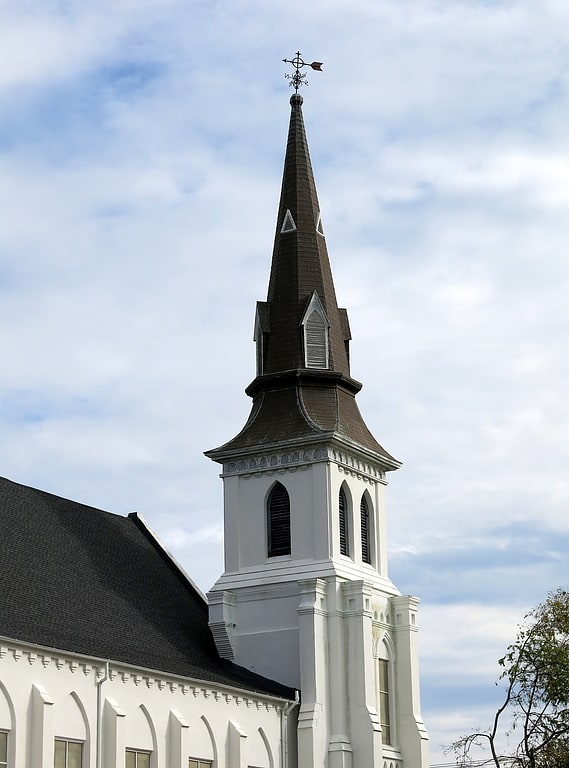
Methodist church in Charleston, South Carolina. The Emanuel African Methodist Episcopal Church, often referred to as Mother Emanuel, is a church in Charleston, South Carolina. Founded in 1817, Emanuel AME is the oldest African Methodist Episcopal church in the Southern United States. This, the first independent black denomination in the United States, was founded in 1816 in Philadelphia, Pennsylvania.
Mother Emanuel has one of the oldest black congregations south of Baltimore. Black Baptist churches were founded in South Carolina and Georgia before the American Revolutionary War.[31]
Address: 110 Calhoun St, 29401-3510 Charleston (The Boroughs)
St. Michael's Episcopal Church
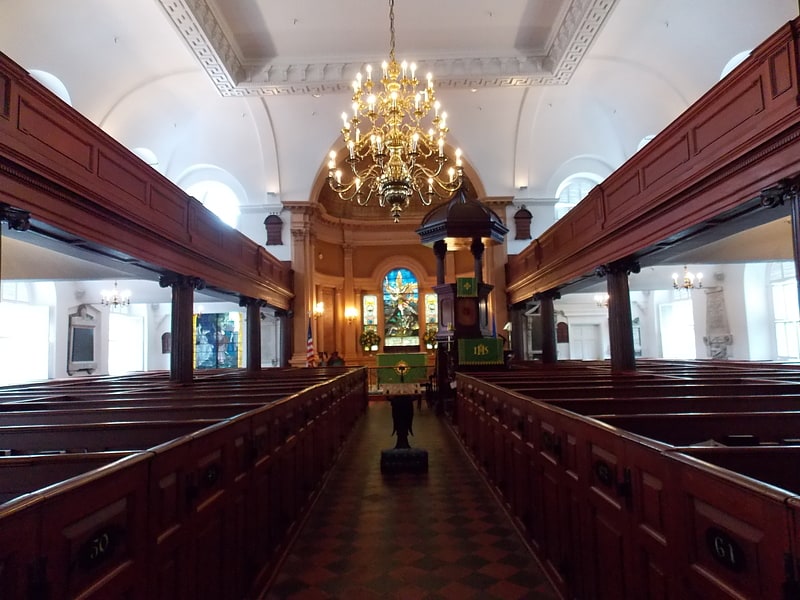
Historical landmark in Charleston, South Carolina. St. Michael's Episcopal Church is a historic church and the oldest surviving religious structure in Charleston, South Carolina. It is located at Broad and Meeting streets on one of the Four Corners of Law, and represents ecclesiastical law. It was built in the 1750s by order of the South Carolina Assembly. It is listed on the National Register of Historic Places and is a National Historic Landmark.[32]
Address: 71 Broad St, 29401 Charleston
Powder Magazine
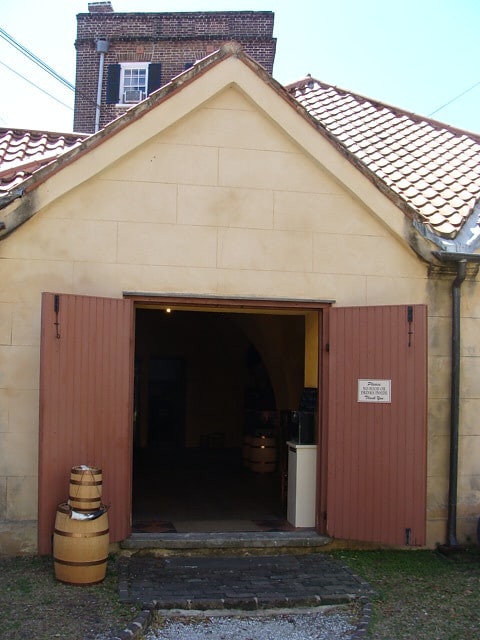
Gunpowder magazine in Charleston, South Carolina. The Powder Magazine is a gunpowder magazine and museum at 79 Cumberland Street in Charleston, South Carolina, USA. Completed in 1713, it is the oldest surviving public building in the former Province of Carolina. It was used as a gunpowder store through the American Revolutionary War, and later saw other uses. The Powder Magazine was declared a National Historic Landmark in 1989. It has been operated as a museum by the National Society of the Colonial Dames of America since the early 1900s. It was designated a National Historic Landmark in 1972.[33]
Address: 79 Cumberland St, 29401-3112 Charleston
Gibbes Museum of Art
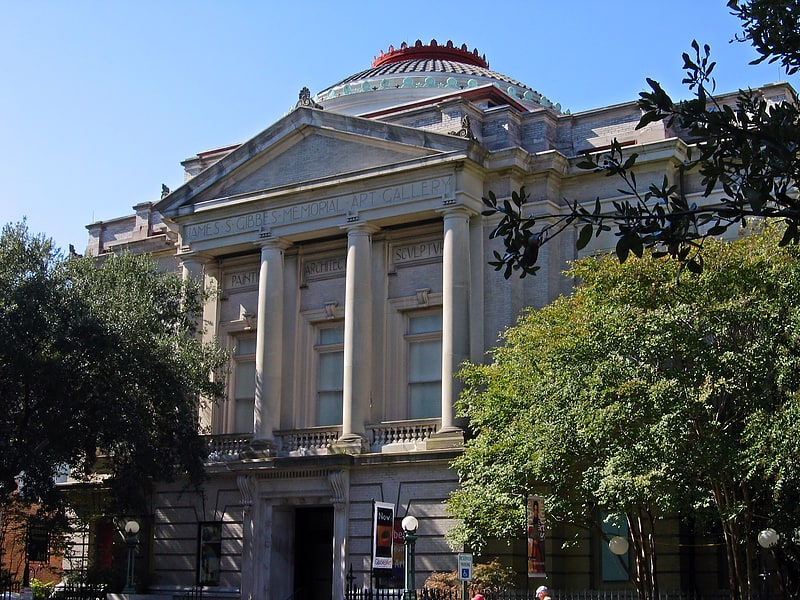
Museum in Charleston, South Carolina. The Gibbes Museum of Art, formerly known as the Gibbes Art Gallery, is an art museum in Charleston, South Carolina. Established as the Carolina Art Association in 1858, the museum moved into a new Beaux Arts building at 135 Meeting Street, in the Charleston Historic District, in 1905. The Gibbes houses a premier collection of over 10,000 works of fine art, principally American works, many with a connection to Charleston or the South.
The benefactor, James Shoolbred Gibbes, donated $100,000 to the Carolina Arts Association upon his death in 1899 for the "erection of a suitable building for the exhibitions of paintings." The city did not receive the money until after the resolution of a will contest filed by nieces and nephews of Gibbes. Their case was heard in the state court of New York during 1900 and 1901. On December 6, 1901, the New York Supreme Court (the state's trial-level court) issued an opinion declaring that the gift to Charleston was valid.
After receiving the money in 1903, the Association hired Frank Pierce Milburn to design the gallery. He planned a Tiffany-style dome, Doric columns, and pediment-capped windows and doors. Milburn completed the drawings of the building in mid-1903, and a drawing of the proposed building was published in the Charleston Evening Post on June 5, 1903. Notices were published seeking contractors' bids for the work starting in August 1903.
In September 1903, H.T. Zacharias was selected as the contractor and received a contract for $73,370 for the building. Zacharias started work on September 28, 1903, removing the remains of the South Carolina Agricultural Hall that had occupied the lot. Although work on the foundations had begun already, a ceremony was held on December 8, 1903, to lay the cornerstone of the building at the northeast corner.
The museum formally opened on April 11, 1905. The collection on display on the opening day included more than 300 pictures, many bronzes, and about 200 miniatures in addition to an "instructive collection" of Japanese prints.
After closing in the early 21st century for an extensive two-year, $13.5 million renovation, the museum reopened to the public on May 28, 2016. In renovating the museum, the development teams used the original blueprints, discovered in the City of Charleston archives in 2008, to return the building to its 1905 Beaux Arts style layout. The first floor has classrooms, artist studios, lecture and event spaces, a café, and a museum store. The rear reception area opens to the garden, part of Charleston’s historic Gateway Walk founded by the Garden Club of Charleston. The entire ground floor of the museum is admission-free.
The museum's collections include the work of numerous artists with connections to Charleston; among them are Henrietta Johnston, Mary Roberts, Charles Fraser, William Melton Halsey, Ned I.R. Jennings, and Jeremiah Theus. The museum also has collected photographs by George LaGrange Cook, including photographs taken after the 1886 Charleston earthquake.[34]
Address: 135 Meeting St, 29401 Charleston
Magnolia Cemetery
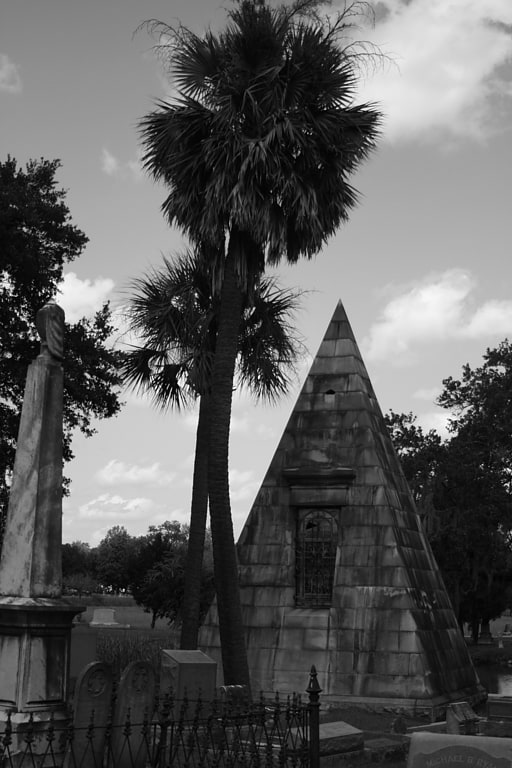
Cemetery in Charleston, South Carolina. Magnolia Cemetery is a historic rural cemetery in Charleston, South Carolina. The first board for the cemetery was assembled in 1849 with Edward C. Jones as the architect. It was dedicated in 1850; Charles Fraser delivered the dedication address. It was listed on the National Register of Historic Places as a Historic District in 1978.
The location of the cemetery had previously been a plantation known as Magnolia Umbra, the house of which was described as a newly built house with five rooms in 1820. The cemetery was constructed during 1850, on plans laid out by Edward C. Jones, and included a Gothic chapel also designed by Jones which no longer exists. The chapel, which was located near the central lake, remained under construction until early 1851. Both the chapel and the porter's lodge sustained very heavy damage during the cemetery's occupation by federal forces during the Civil War. The porter's lodge at the entrance was demolished in 1868, but the chapel continued to be used until at least 1876.[35]
Address: 70 Cunnington Ave, Charleston (The Neck)